They might be a little unruly, but these 9 flowers will elevate your chaos garden aesthetic, say horticulturalists
This naturalistic style of planting lends itself to a more relaxed gardening approach and a soft aesthetic
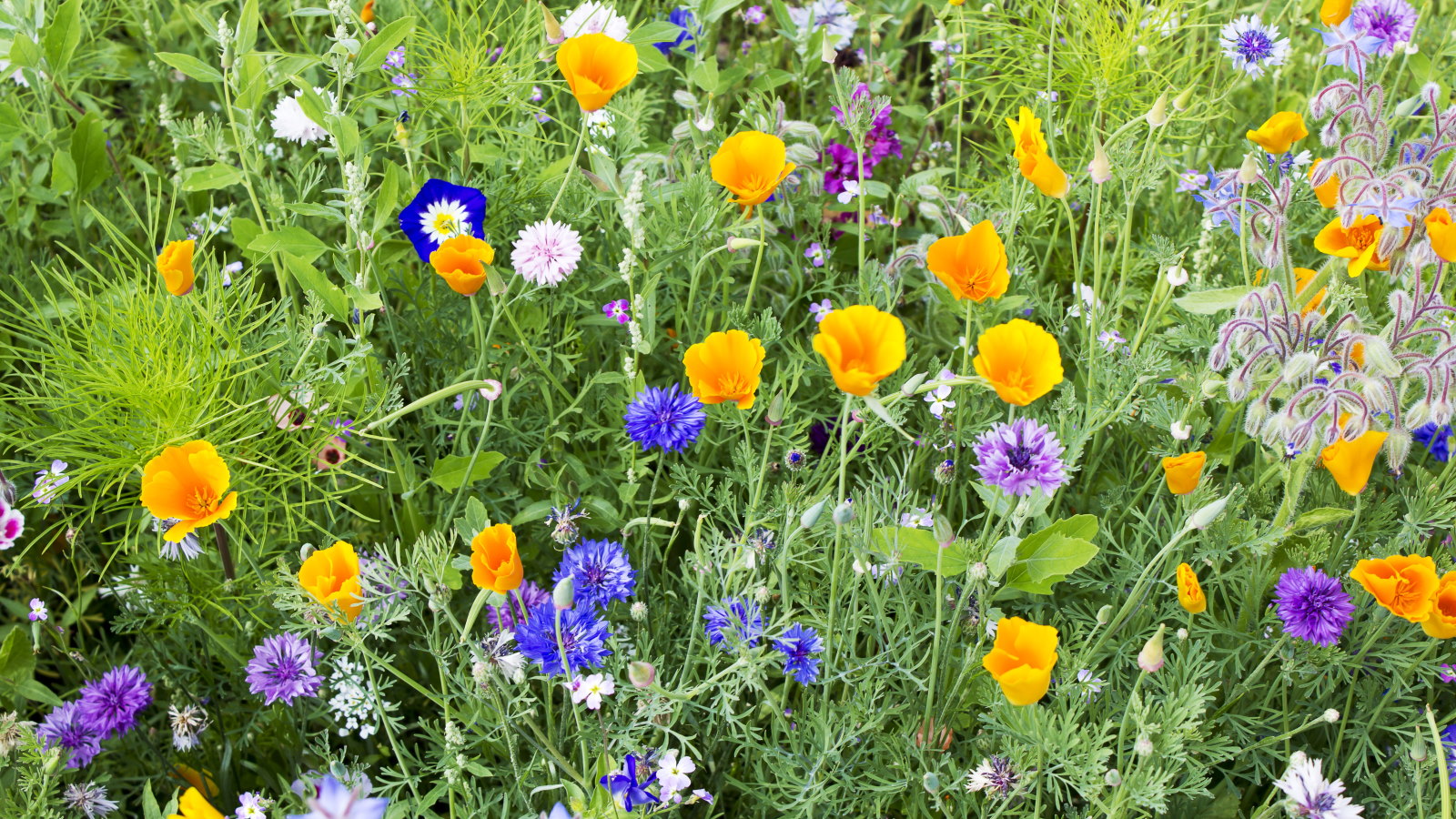
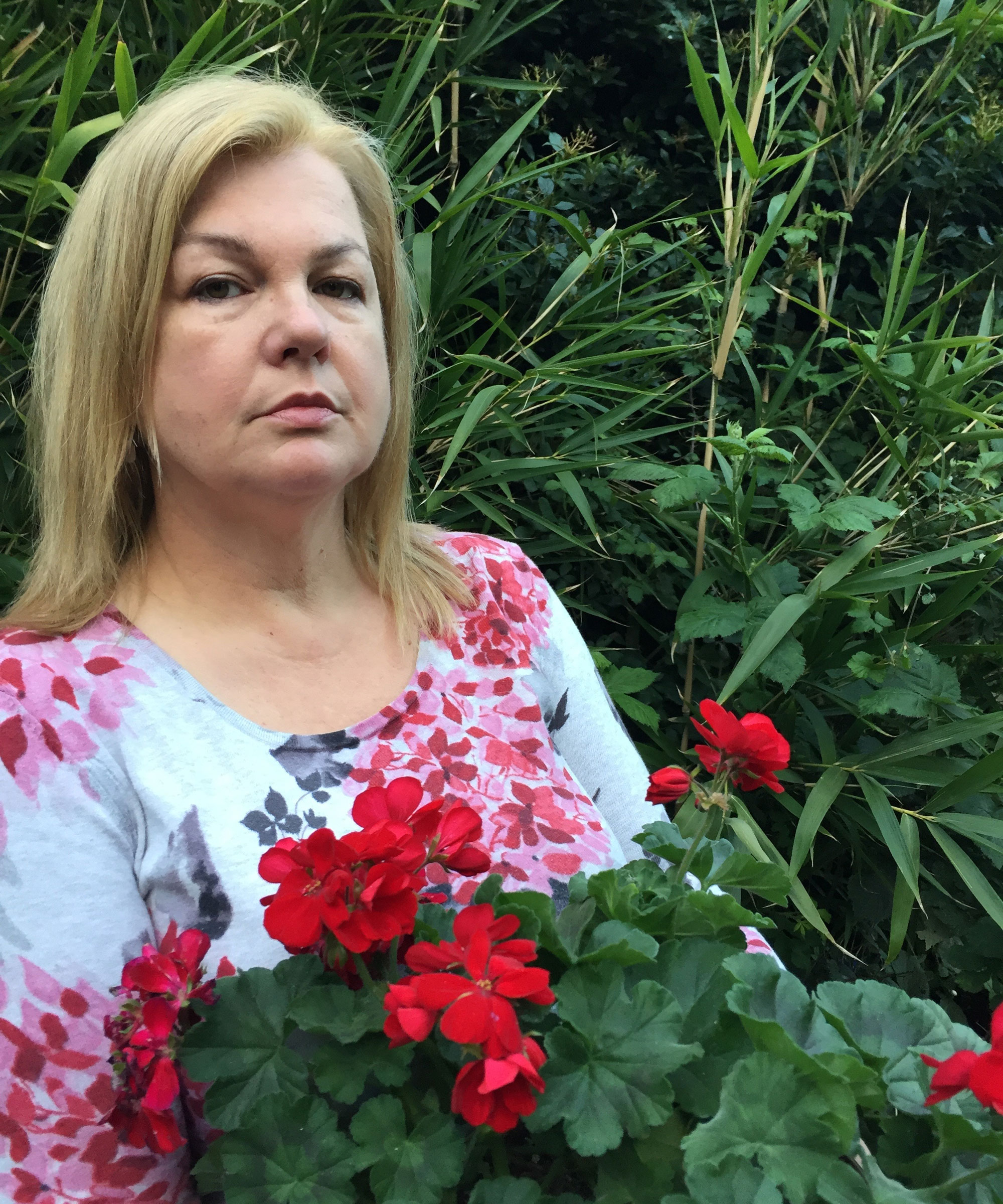
In chaos gardening the focus is on choosing native or wild plants and letting them grow and self seed informally - essentially the opposite of organised flowerbeds.
Choosing the best plants for chaos gardening means first deciding how far you want to take the look. Depending on your desired result you can include self-seeding flowers, perennial plants, ornamental edibles, and herbs, combining them in the style of a relaxed potager garden. You could even also add a few 'well-behaved' weeds such as dandelions and buttercups to the mix.
The easiest way to get into chaos gardening is to simply empty all your leftover seeds into a big bowl and scatter them around in the garden wherever you want flowers, edibles, and herbs to grow. This may sound a little scary to some, but there is so much beauty to be had in letting nature be our guide. With that in mind, these expert-recommended plants are perfect for an elevated chaos garden look.
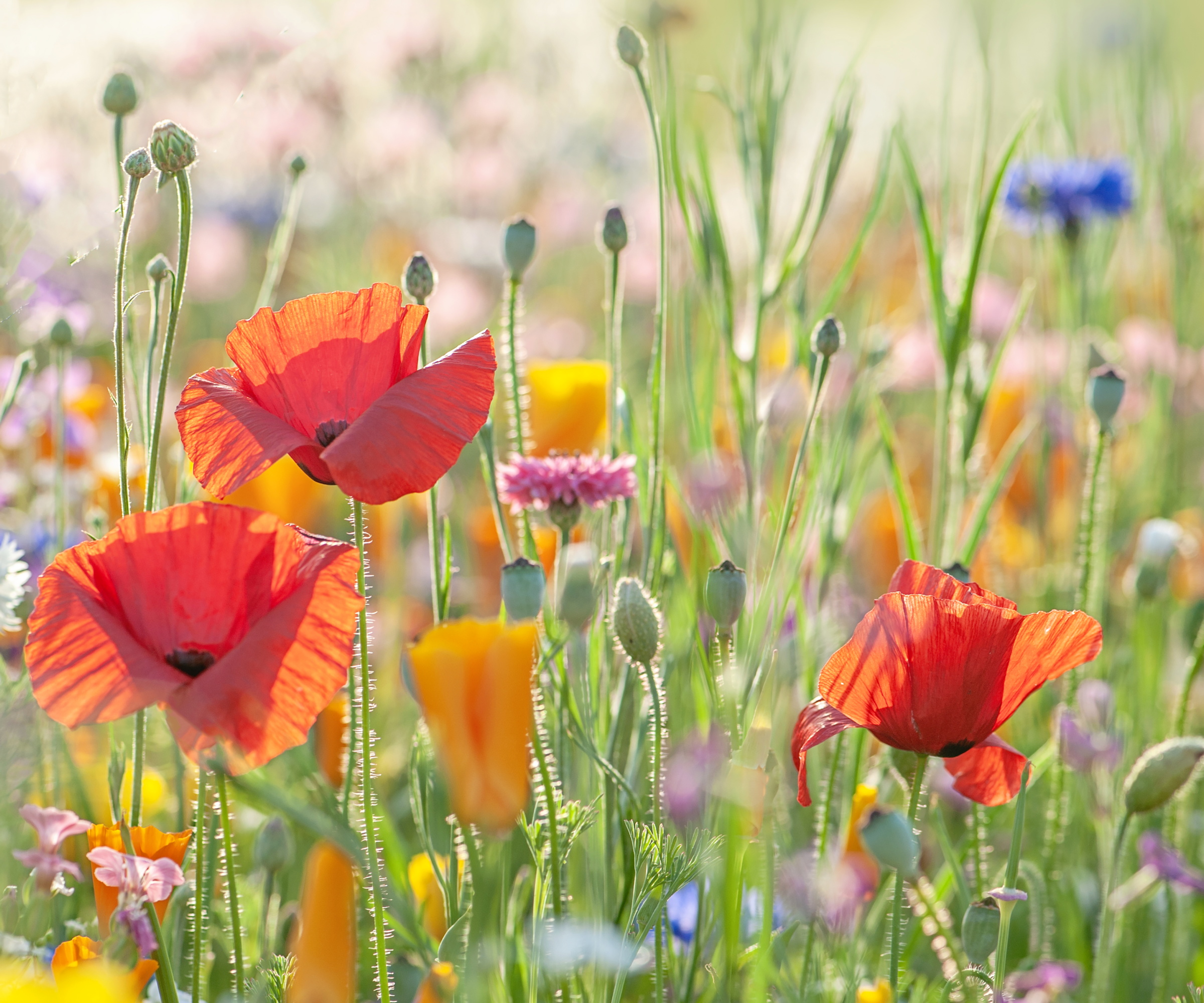
9 of the best plants for chaos gardening
'I love the natural feel of chaos gardening,' says garden designer Laura Janney, founder of The Inspired Garden. 'It’s a great way to experiment and see what happens, which is what makes it so special.
'The best part of chaos gardening is throwing in extra plants. Some of my favorite gardens were made by just tossing in our leftovers. Just set yourself up for success by trying to install plants that can handle similar conditions.'
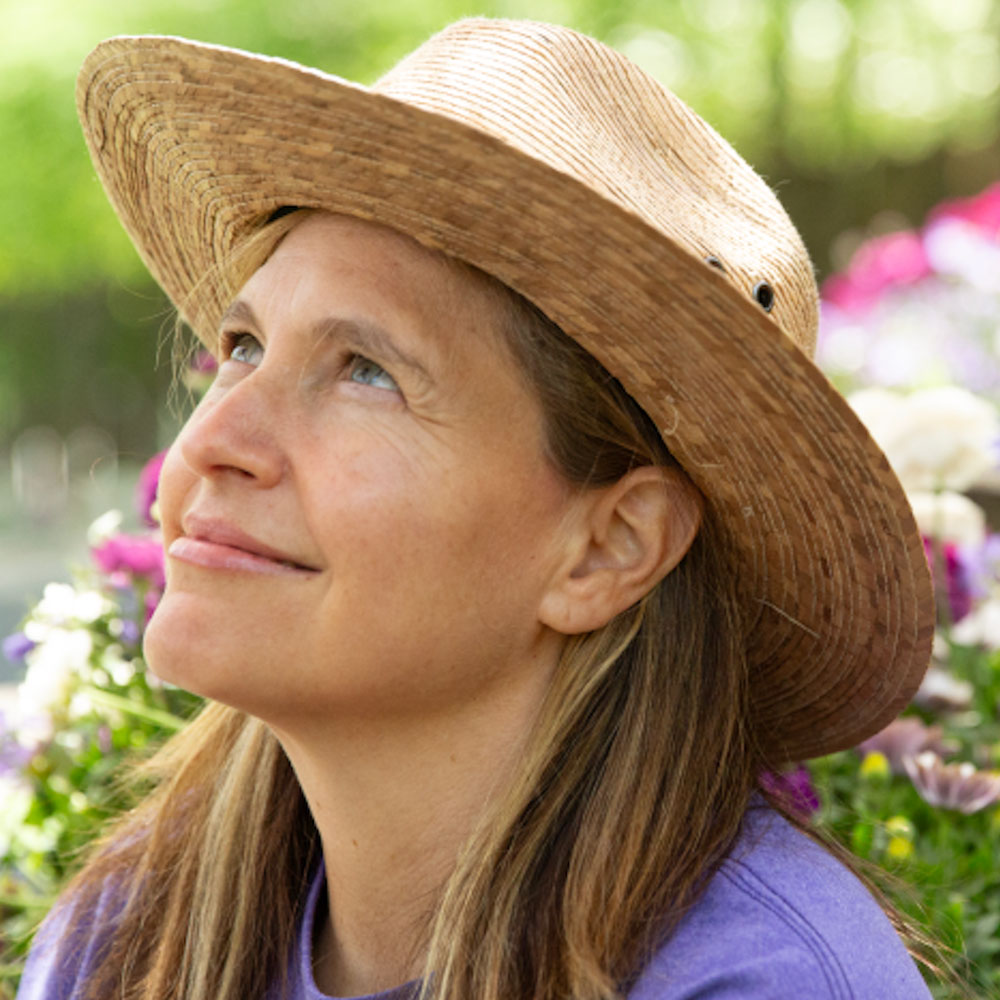
Laura Janney won the 2023 Houzz Best in Design award for her work in the New York area. With a blend of creativity and mindfulness, each of her designs has a sense of magic and wonder that makes her gardens both luxurious and inviting. At the heart of Laura’s design philosophy lies the concept of 'imperfectly perfect', which pretty much sums up the essence of chaos gardening. Laura sees gardens as more than simply outdoor spaces. They are living, breathing sanctuaries that feed the soul and awaken the senses.
1. Coneflower
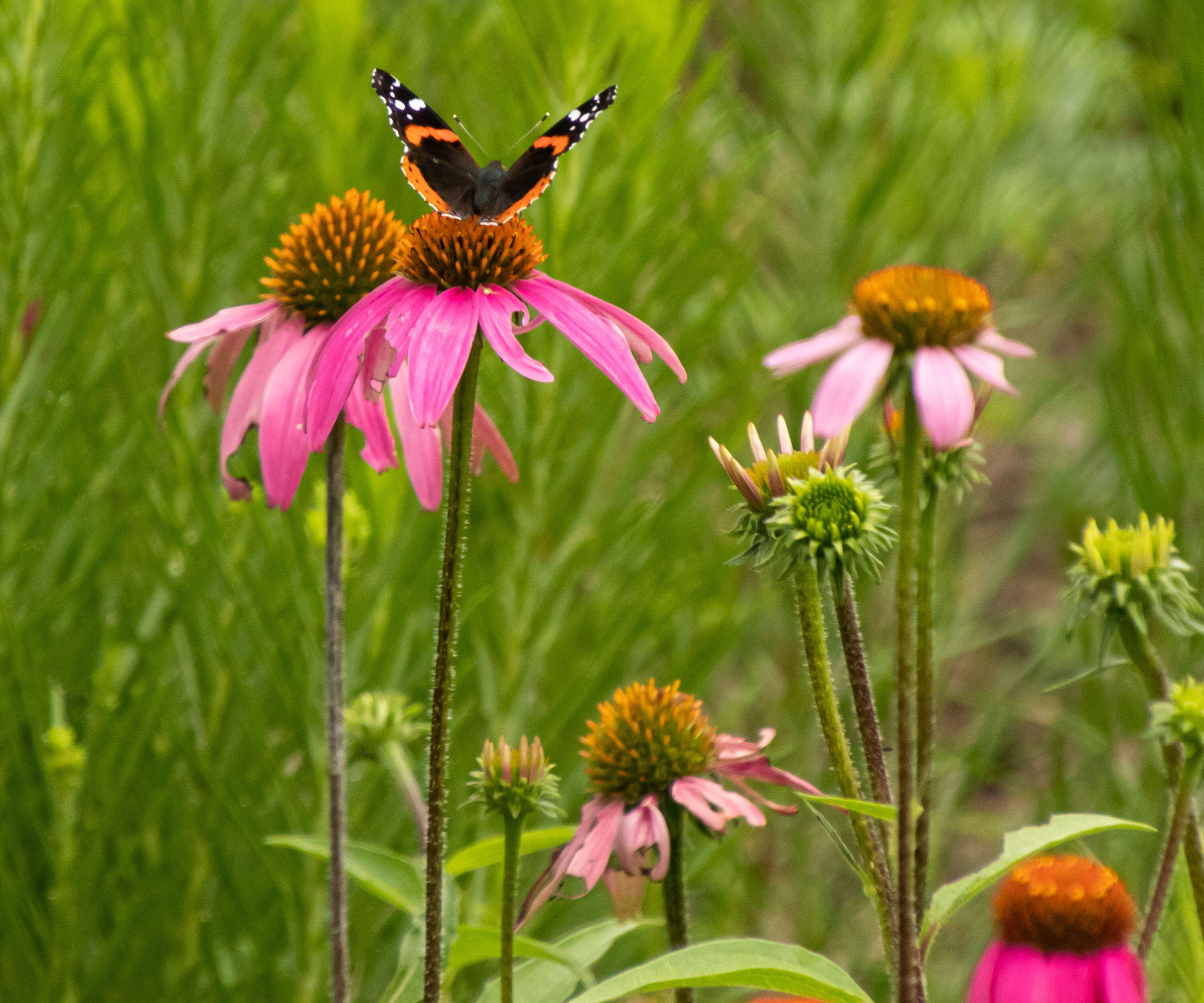
'I love coneflowers for chaos gardening,' says Laura. 'I just adore the texture and the pop of color they bring. They're great for attracting pollinators too. Coneflowers start blooming in midsummer and with deadheading can go all the way into frost.'
Echinacea purpurea (as they are also known) prefer full sun, grow in zones 3-9, and can handle a variety of soil conditions. They like well-drained loamy soil but can handle clay and sandy soil. Find out more about how to grow coneflower and you won't believe how easy it is. These daisy-like flowers come in a range of colors including pink and orange.
'Coneflowers reseed as well as spreading underground via rhizomes,' explains Laura. 'When done blooming you can cut them down to the stem. But many people do nothing at all and leave the seed heads for the birds and it adds a lovely interest to your winter garden when everything else has died back.'
As they self-seed so easily they are one of the best plants for chaos gardening, as they spread and fill the gaps beautifully. Find coneflower seeds at Walmart.
2. Cosmos

'In chaos gardening you never know what you are going to get so make sure to throw in annual meadow-style plants like cosmos that will bloom this year,' says landscape designer Caitlin Francke Boyle, founder of Dirt Diva Designs, and based in Chatham, NJ.
'They grow easily from seed. Your other leftover seeds may be perennials that don't come in fully the first year so you need a backup. Cosmos are vigorous growers that will reward you with fantastic blooms.'
Cosmos do best in a sunny spot protected from wind, grow in zones 2-11, and prefer a light, well-drained soil. You can find out more about how to grow cosmos but really the easiest way to grow them is by sprinkling some seeds directly in the garden after any danger of frost has passed. Varieties like 'Purity' (shown here) can reach up to 4 or 5 feet tall, so let the plants support each other as they grow for a natural and unrestrained look.
Closely resembling daisies, cosmos come in a range of glorious shades of yellow, white, pink, orange, and red.

Caitlin Francke Boyle is the owner of Dirt Diva Designs, a full-service landscape design firm, in Chatham, NJ. She trained in landscape design at the New York Botanical Garden. She loves creating outdoor spaces for clients that will bring them joy for years to come. The New York Times recently published a piece Caitlin wrote for her blog The Dirt. She does talks on landscape design and contributes to magazines such as Fine Gardening.
3. Queen Anne's lace
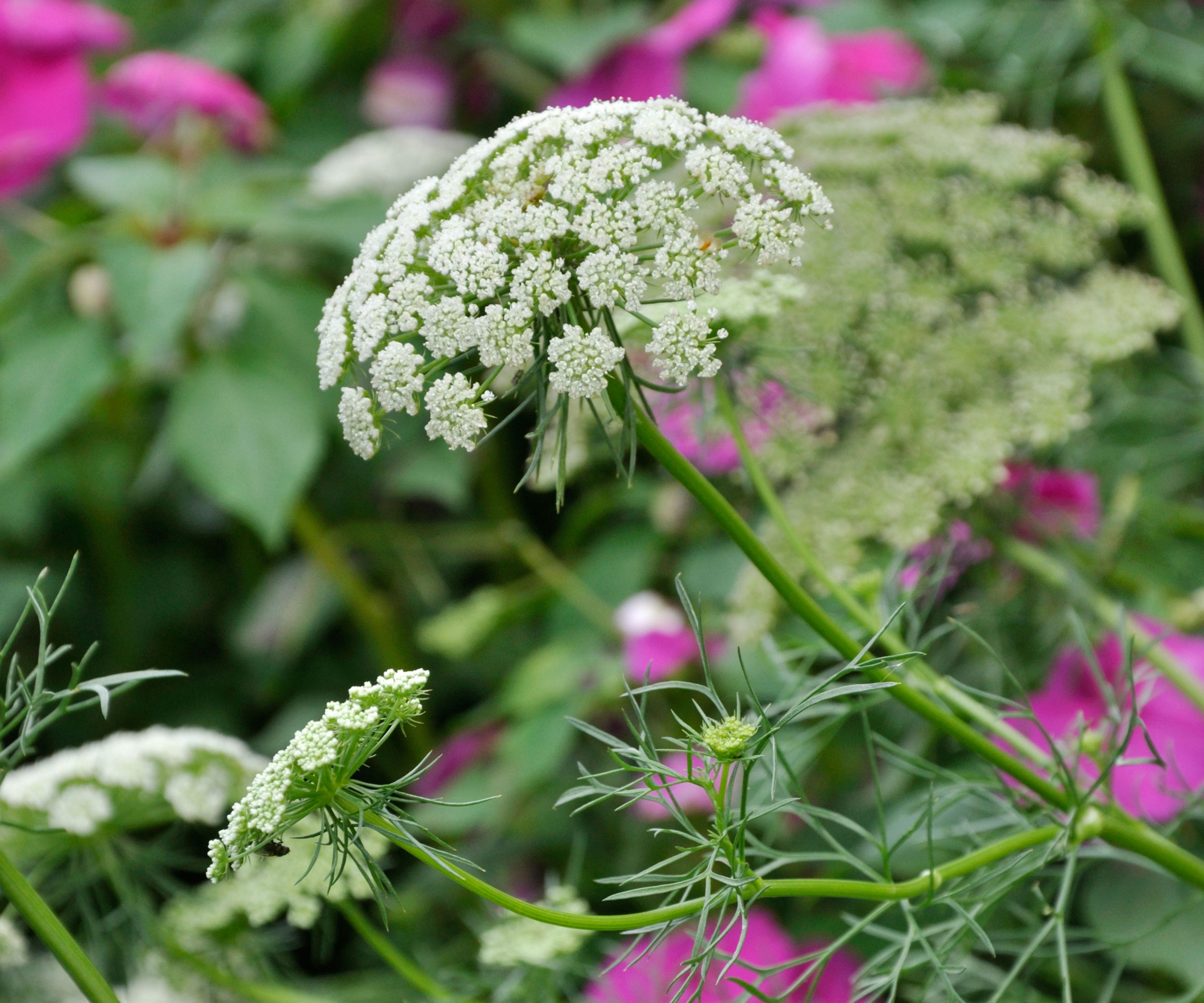
'The delicate variety Queen Anne’s lace, which many people consider a weed, brings airy beauty to gardens while serving as a magnet for helpful pollinators,' says Tammy Sons. 'Planting these adaptable, self-sufficient varieties lets my garden transform annually into a naturally wild and effortlessly magical landscape that's the essence of chaos gardening.'
Queen Anne’s Lace (also known as Daucus carota or wild carrot) thrives in zones 3-9. The white blooms look like lace, which is where it gets its name from. This beautiful ornamental plant will add aesthetic appeal to your chaos gardening ideas, and is a good choice for the rewilding garden trend too. It goes with pretty much everything.
'Chaos gardening represents a gardening approach that I love because it lets nature lead while I provide subtle guidance,' adds Tammy. 'I enjoy spreading out old seed packets while welcoming plants that self-seed and supporting neglected plants to grow successfully.'

Plant expert Tammy Sons is the CEO of TN Nursery, a family-owned business in Altamont, Tennessee, that dates back to 1959. Growing up in the nursery, she developed a deep passion for plants and the environment. Over the years, Tammy has expanded TN Nursery from a modest operation into a thriving enterprise, now encompassing nearly 400 acres.
4. Black-eyed Susan
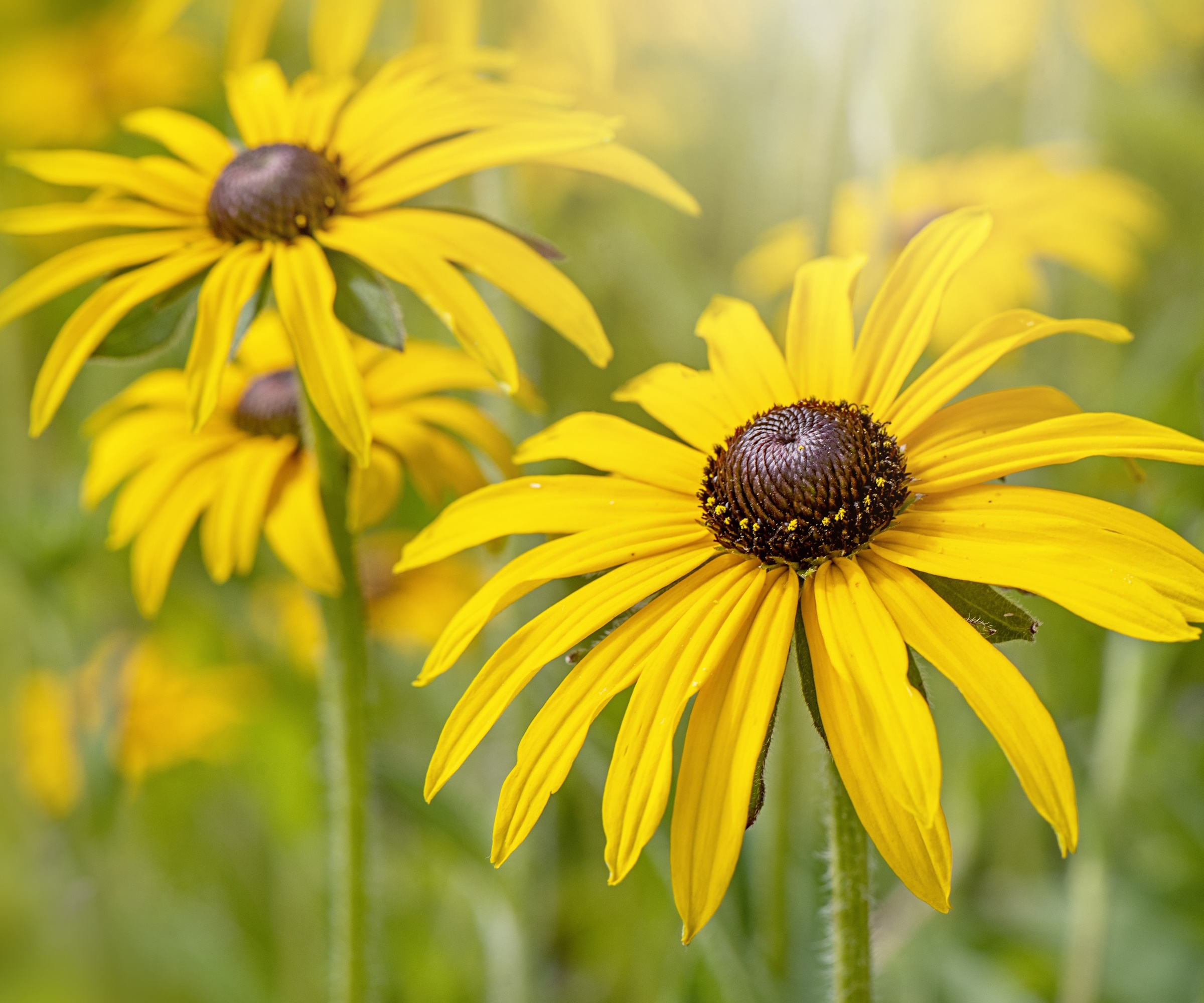
'Chaos gardening is all about embracing the wild, and developing plant palettes that will blend well together,' says Michael Clarke, founder at Yardwork. 'Black-eyed Susan (Rudbeckia hirta) works well in a scheme like this. It's a tough, drought-tolerant perennial that blooms all summer long with bright yellow flowers. Their dark centers stand in high contrast to the bright exteriors and provide excellent pops of color in the garden, especially when mixed with more muted ornamental grasses.'
They thrive in poor soil and can tolerate a variety of light conditions, from full sun to partial shade and they’ll spread over time but are not aggressive, so they won't completely overtake your garden. They do well in zones 3-9. Find out how to grow black-eyed Susan and you'll soon discover the benefits of this easy-going flower.
You can find black-eyed Susan plants at Nature Hills.

Michael Clarke is the founder of Yardwork and Pulled, the online platforms for everything home and garden. He has a degree in landscape architecture and horticulture from the University of California Davis. He was previously the founder of a landscape development and maintenance company.
5. Nigella
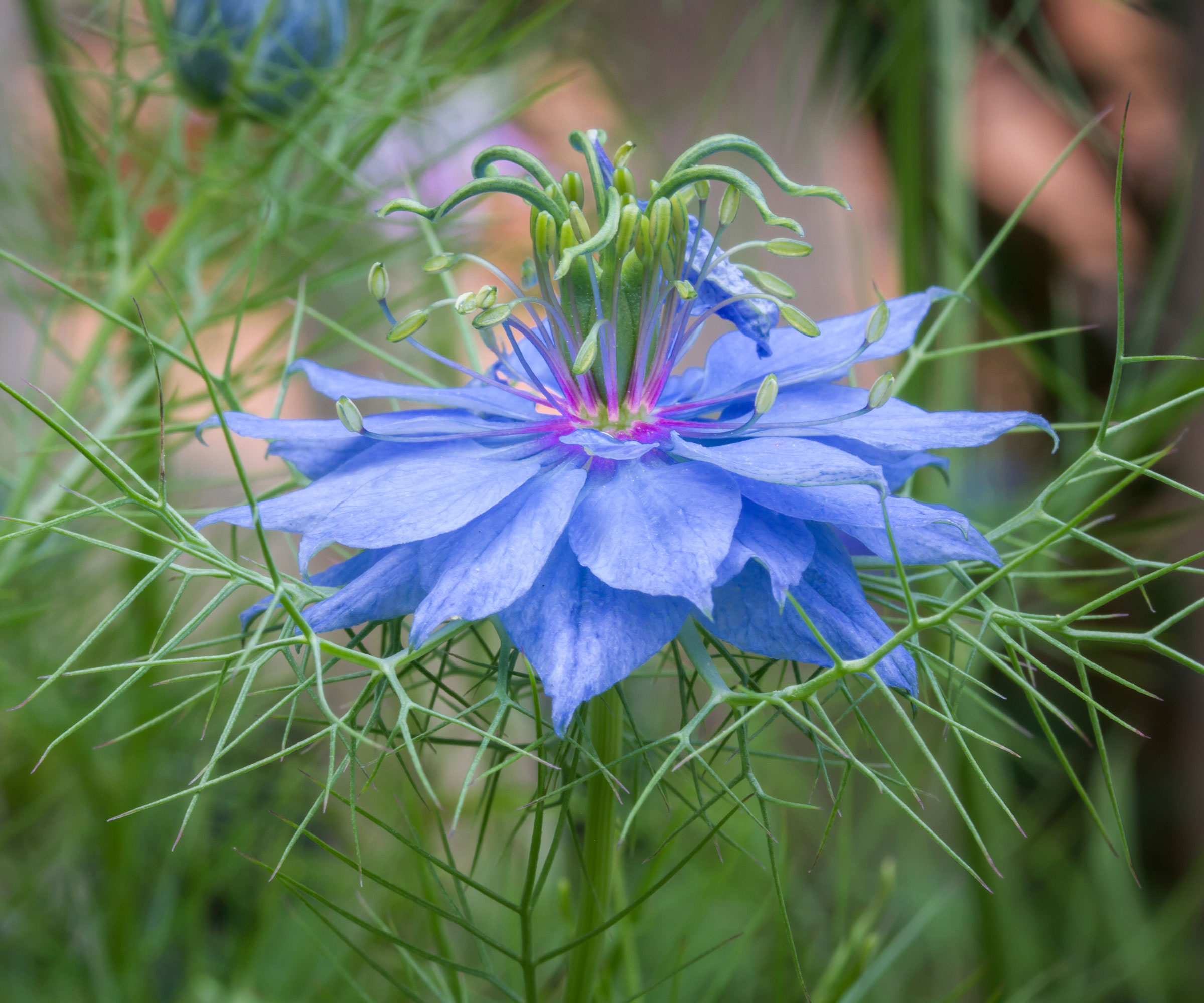
'Hmm, chaos gardening – that’s my kind of anarchy,' says plant expert Valeria Nyman. 'It’s unpredictable, a little messy, but full of life and beauty. I love to throw into the mix self-seeders, scrappy survivors, and plants that know how to party without much of a plan.'
One of Valeria's nominations for best plants for chaos gardening is nigella, a gorgeous little plant that will give you a charming display in summer. 'Nigella (aka love-in-a-mist) pops up in places where you didn’t plant it. The delicate blue, white, or pink flowers "float" above pretty ferny foliage. Scatter once, and it’ll weave itself into your garden and be the star of your chaos gardening scheme.'
Find out how to grow nigella and you'll soon discover that once it's established in your yard, it will become a permanent fixture due to its self-seeding nature. It will grow in any well-drained soil in a full-sun position, and thrives in zones 2-11.

Valeria Nyman is the chief product officer at Taim.io, an innovative platform that serves as a personal, adaptive gardening coach, offering tailored weekly advice to users. As a product designer and strategic leader, Valeria bridges the gap between business vision and user-centered design, crafting intuitive experiences that drive both engagement and satisfaction.
6. Cleome
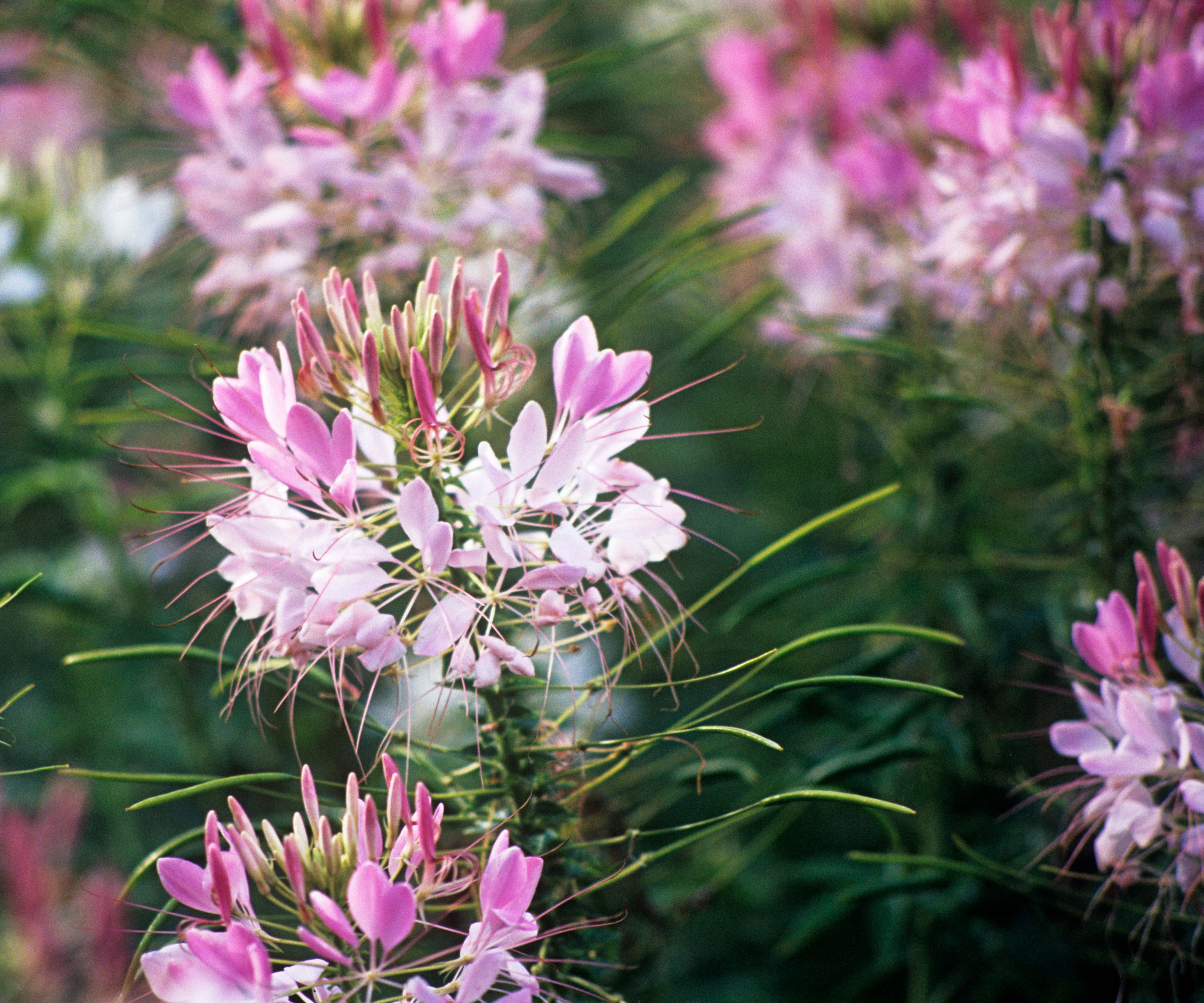
'Talk about a prolific re-seeder,' says Laura Janney. 'I love the unusual large spider blooms that make a stunning pop in the garden. Plant just one and you will soon have an abundance of cleomes for years to come.'
You can start this annual from seed then transplant the seedlings outdoors, or direct sow in the ground. 'I have split open the pods during the summer and spread the seeds around to other areas of the garden,' says Laura. 'They like well-draining, rich and fertile soil.'
Also known as spider plant, spider legs and grandfather's whiskers, this absolute beauty and chaos gardening favorite grows in zones 2-9, and is perennial in zones 10-11. It prefers full sun and will keep blooming right until frost.
It grows quickly from seed to form strong stems up to 6 feet tall, and given enough space, can grow as wide as they are tall. This means it's a good choice for chaos gardening planting schemes as it adds height. You can find cleome seeds at Walmart.
7. Zinnia
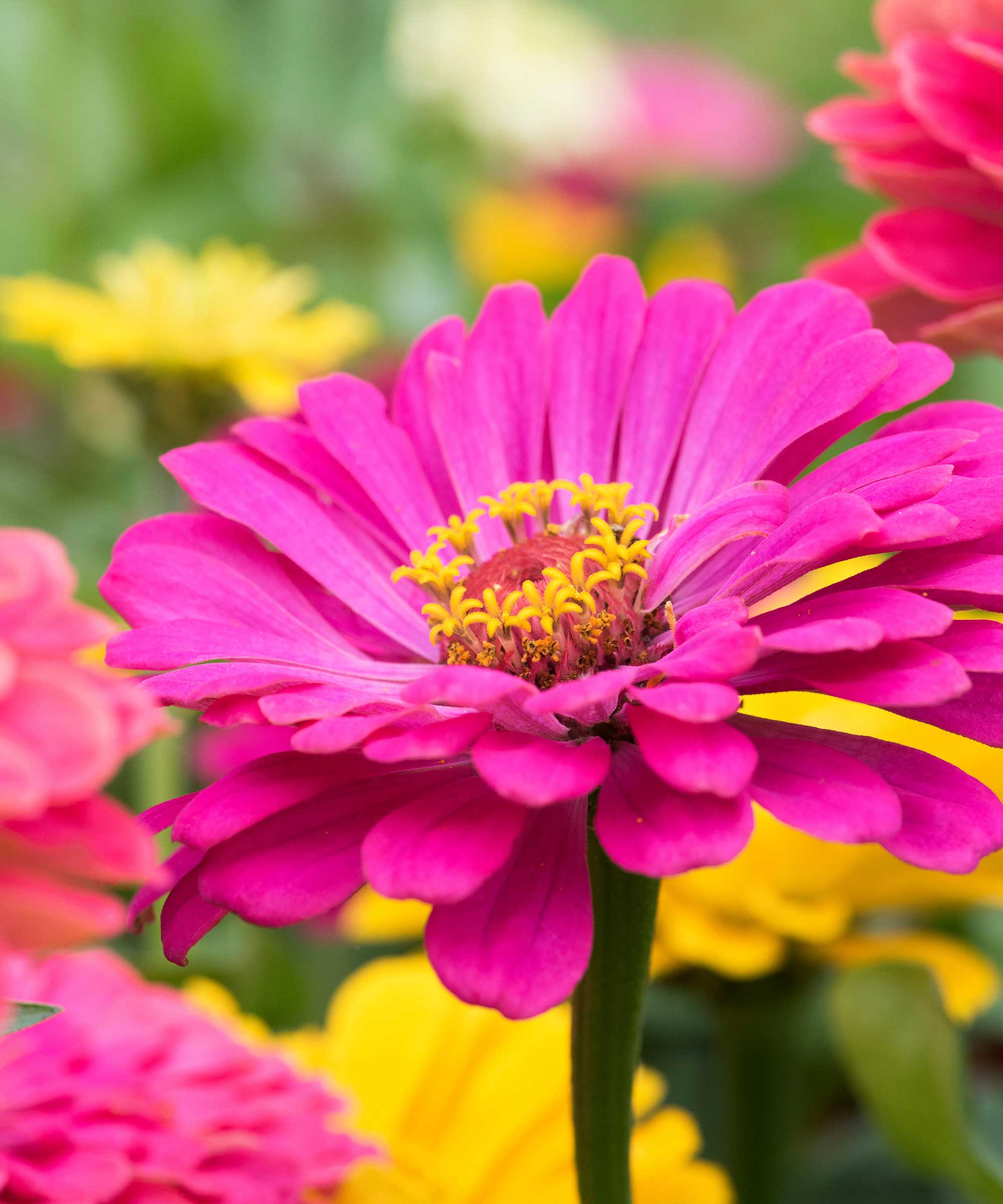
'You will also need some color in your chaos gardening scheme just in case it takes awhile to get your seeds going,' says Caitlin Francke Boyle. 'Zinnias are big color annuals that are some of the easiest plants to grow. You will get blooms in a matter of weeks and you can even get a continuous succession of blooms by sowing the seeds every two weeks.'
Finding out how to grow zinnias is easy. They like full sun and well-drained soil, and are drought tolerant too. You can direct sow zinnia seeds into the ground outside after last frost.
As well as being one of the best plants for chaos gardening they are also a good choice for other naturalistic garden spaces such as wildflower meadows and prairie planting. Their bright flowers are a magnet for butterflies and bees, so for this reason they make it onto our list of the best plants for pollinators too.
8. Bachelor's button
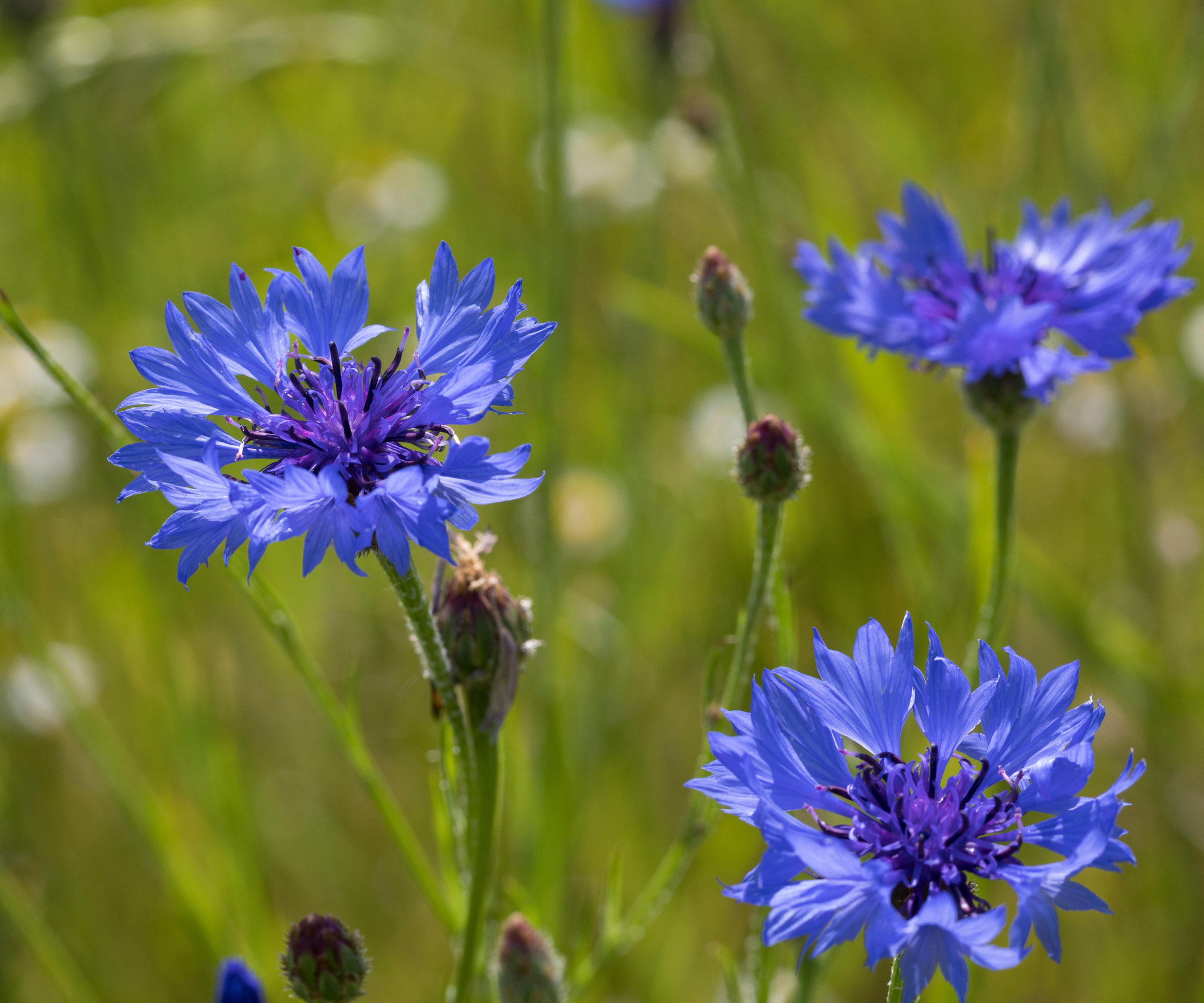
'The tall, slender stems and bounty of blooms of this perennial flower bring an airy, dreamy quality to chaos gardening schemes,' says Laura Janney. 'Bachelor's button (also known as Centaurea cyanus) blooms in mid-spring and has a long bloom time.'
Laura advises continuously deadheading your plants then more buds will come. 'After the first blooming cut back and you may be rewarded with a second blooming at the end of summer. They prefer well-drained soil and as a bonus they do well in poor soil.'
This variety does best in bright and sunny conditions, so choose a planting spot that receives a lot of sun. Once established they will seed prolifically and become a permanent feature in your garden. They thrive in zones 3-9.
9. California poppy
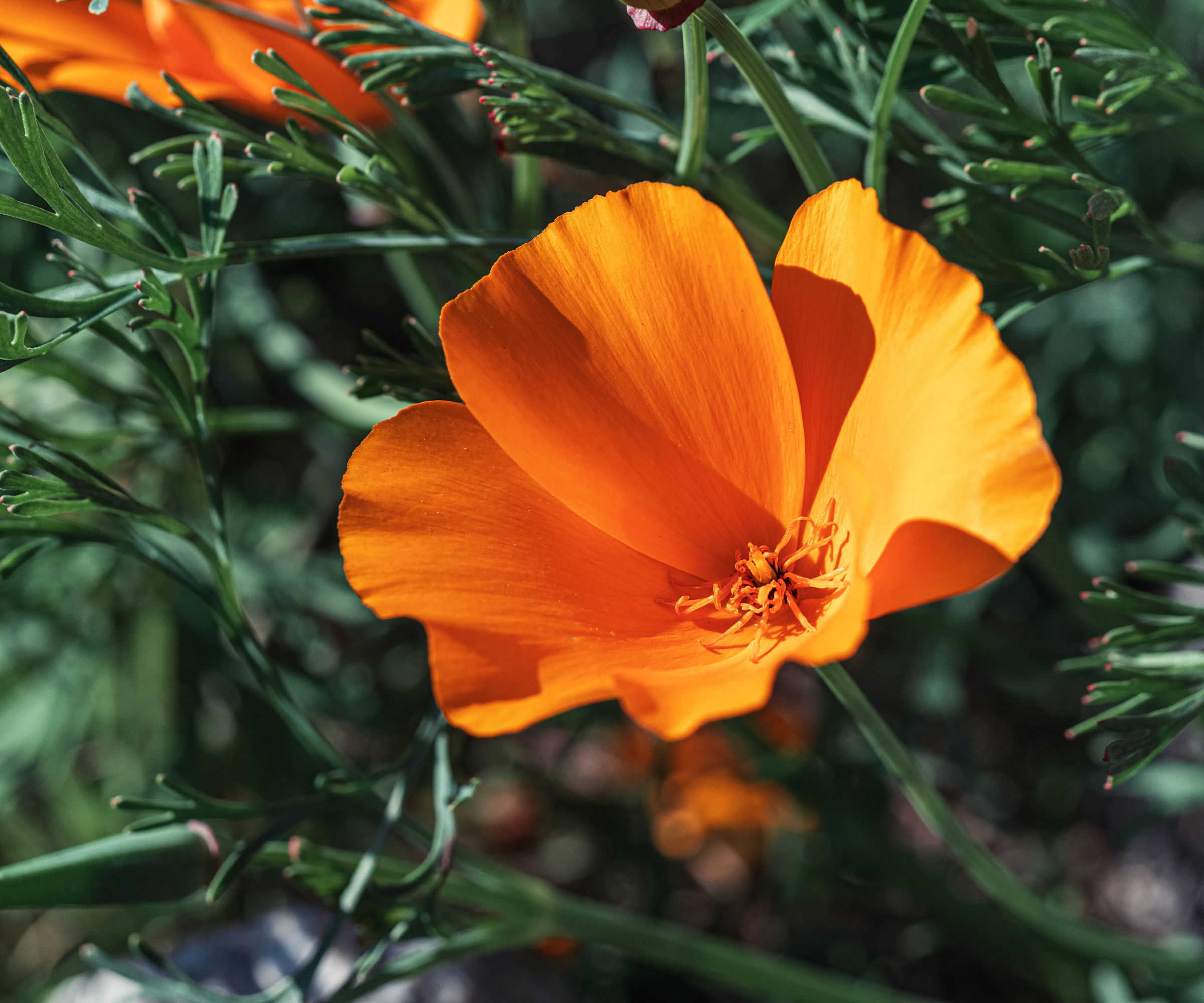
There were plenty of nominations for California poppies (Eschscholzia californica) on our list of the best plants for chaos gardening. Thriving in Zones 6-10, these fast growing flowers germinate in around a month, depending on local conditions.
'Poppies are enchanting with their brief beauty, then spread seeds for colorful displays in the next season,' says Tammy Sons. 'Planting these adaptable, self-sufficient varieties lets my garden transform annually into a naturally wild and effortlessly magical landscape.'
'Drop seeds, ignore them, and you’ve got waves of neon orange blooms that close up at night, like they’re tucking themselves in,' says Valeria Nyman. 'Tough as nails and drought-loving (they are also a great choice for xeriscaping ideas), these beauties will reseed seemingly forever.'
'It's also important to bring in annual plants native to the US as it's better for our ecosystem,' says Caitlin Francke Boyle. 'Get easy color with plants like California poppy and carpet the space in orange.'
Find out how to grow California poppies and include them as a must-have in your chaos gardening ideas. Find California poppy seeds at Walmart.
FAQs
Which ornamental grass works best for chaos gardening?
Ornamental grasses work really well for chaos gardening ideas, as they provide height and texture among the backdrops of perennials and self-seeders.
'One of my favorites is maiden grass (Miscanthus sinensis), a tall, clumping grass that grows in a graceful, arching shape, typically reaching heights of 4-7 feet,' says Michael Clarke. 'It has narrow, arching leaves that are green in spring and summer, then turn golden, bronze, or red in the fall, creating a beautiful contrast.'
There is also a bonus if you choose Miscanthus for chaos gardening. In late summer to fall, maiden grass produces feathery, silvery or pinkish plumes that catch the wind and add extra texture.
'It grows in a somewhat wild and untamed manner but is still structured enough to provide definition,' adds Michael. 'Its tall, flowing form gives a sense of movement that doesn’t demand constant attention or pruning. It does well in a wide range of soils and is drought tolerant growing in zones 5-9.'
Our experts also suggested a couple of other top picks for the best plants for chaos gardening, including yarrow for its cloud of color that seems to float above the garden and ability to spread around (and makes it on to our list of longest flowering perennials), and Verbena bonariensis, which also floats above other plants, blooms for months, and self-seeds like crazy.
Sign up to the Homes & Gardens newsletter
Design expertise in your inbox – from inspiring decorating ideas and beautiful celebrity homes to practical gardening advice and shopping round-ups.
Lifestyle journalist Sarah Wilson writes about flowers, plants, garden design and gardening trends for Homes & Gardens. She has studied introductory garden and landscape design and floristry, and also has an RHS Level 2 qualification in the Principles of Plant Growth and Development. She is a regular contributor to Homes & Gardens and Livingetc. She has also written for Real Homes, Modern Gardens and Country Homes & Interiors magazines.
You must confirm your public display name before commenting
Please logout and then login again, you will then be prompted to enter your display name.
-
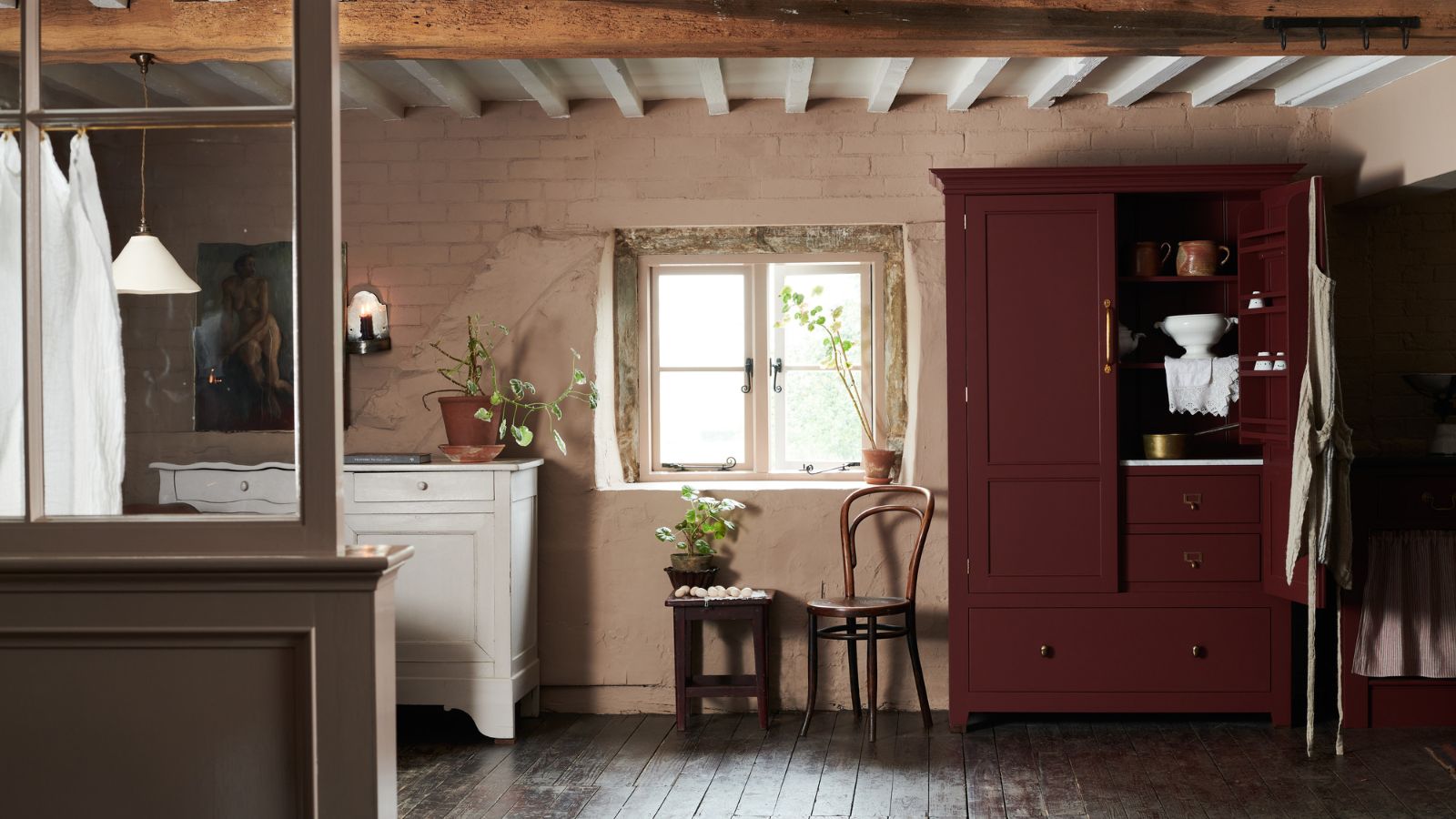 I’m a professional cleaner, and I swear by these quick and easy tips to clean pet hair from wooden floors
I’m a professional cleaner, and I swear by these quick and easy tips to clean pet hair from wooden floorsStaying on top of the mess makes it 10 times easier
By Carolina Kazimierski
-
 Kim Kardashian, Flea, and Travis Scott have this space-age sofa in their living room – the unique, luxury piece is redefining how we think about seating
Kim Kardashian, Flea, and Travis Scott have this space-age sofa in their living room – the unique, luxury piece is redefining how we think about seatingRecently, we've spotted this otherworldly sofa in the homes of seemingly every celebrity we know, Kim Kardashian included
By Sophie Edwards